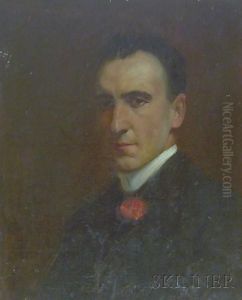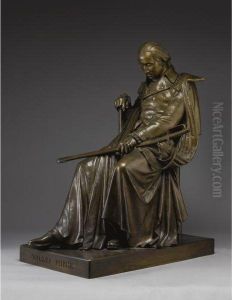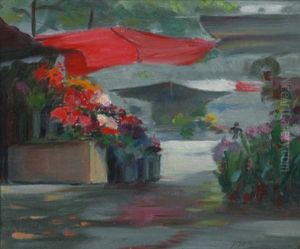Franklin W. Simmons Paintings
Franklin W. Simmons was an American sculptor born on July 11, 1839, in Webster, Maine. He demonstrated artistic talent from a young age and pursued his interest in art despite the lack of a formal art education in his early years. Simmons began his career as a portrait painter but soon turned his focus to sculpture. His transition to sculpture coincided with the American Civil War, which provided a significant demand for commemorative works and memorials, a niche that Simmons would come to excel in.
Simmons received his first major recognition for a bust of Governor Israel Washburn Jr., which earned him a commission for a statue of Roger Williams for the National Statuary Hall Collection in Washington, D.C. This success led to further prestigious commissions and helped solidify his reputation as an accomplished sculptor.
In 1867, Simmons moved to Rome, Italy, a city that was then a hub for classical art and sculpture. Living in Rome allowed him to refine his skills and work with marble, which became his preferred medium. He became a prominent member of the expatriate artist community there and was influenced by the neoclassical style, which was prevalent among European and American artists in Rome at the time.
Throughout his career, Simmons created numerous statues and busts of prominent figures, including Abraham Lincoln, Ulysses S. Grant, and Admiral David Farragut. Additionally, he produced allegorical works and contributed to various public monuments. His style was characterized by a combination of neoclassical idealism and a realistic representation of his subjects.
Simmons' works were well-received in both the United States and Europe, and he earned several awards and honors for his contributions to art. Despite living in Italy, Simmons maintained strong ties to the United States, and many of his works are found in American institutions and public spaces.
Franklin W. Simmons passed away on December 8, 1913, in Rome, leaving behind a legacy of important works that continue to be appreciated for their artistic merit and historical significance. His sculptures are part of the collection of several major museums and are a testament to his skill and dedication to the art of sculpture.


